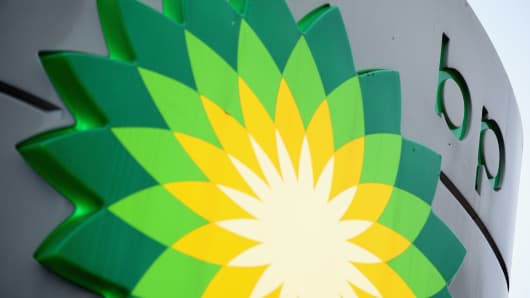Europe's energy price manipulation probe has turned regulatory attention to secretive trading units at oil companies with huge turnover and millionaire staff with risk appetite higher than at Wall Street's biggest banks.
Regulators have scrutinized banks, trading houses and commodities markets more closely following the Libor benchmark rigging scandal but trading desks at oil majors have largely escaped attention.
Although banks and trading houses have expanded rapidly in energy over the past decades, oil companies still often dwarf them in size, geographical reach, profits and sometimes the magnitude of scandals surrounding their operations.
An EU investigation into the suspected manipulation of the price of crude oil, refined products and ethanol has thrown them into the spotlight.
"Political pressure for regulatory action and stricter oversight of both traders and price reporting agencies will ramp up," said Roderick Bruce, energy analyst at IHS think-tank.
EU investigators raided offices of BP, Shell and Statoil, trading house Argos Energy and pricing agency Platts last week as part of the case. It was the biggest cross-border action by the regulators since the Libor scandal.
Despite massive disclosure obligations by publicly-listed oil firms, simple metrics such as revenue and profit at their trading divisions are not public.
There is also pressure from shareholders for the companies to provide more transparency.
"Obviously you can't talk about the size of the positions that the companies are taking, but in terms of the impact that trading has on profitability, it should be evident because that helps to explain the underlying profitability of the company," said Charles Whall, who helps co-manage $1.08 billion at Investec Global Energy Fund, including shares in Shell.
The world's biggest trading houses including Glencore, Vitol, Gunvor, Trafigura and Mercuria, long perceived as the most secretive firms in oil trading, have all started releasing detailed financial data in recent years to tap bond and equity markets.
By contrast, oil majors like BP, Shell, Statoil, Total and Eni disclose very little.
For example, BP, one of the biggest and most powerful trading desk in the industry, last disclosed figures for trading in 2005 when it earned $2.97 billion, or over a tenth of the group's overall net profit.
Risk Appetite
Since 2005, BP has only disclosed whether trading had "stronger" or "weaker" contributions in a given quarter. Disclosure levels at Shell, Total, Eni are similar.
"Our trading activities are accounted for under International Financial Reporting Standards. The disclosures we provide in the annual financial statements are also determined by those standards," a BP spokesman said.
He added that when trading has a notable impact on quarterly performance the firm would always spell this out. Shell, Eni and Total declined to comment.
Insiders say BP's annual trading profits have fluctuated since 2005 between $1-$3 billion compared to $1.7-$2.3 billion at the world's largest oil trading house Vitol.
Oil majors say trading facilitates cooperation between their producing, refining and distribution units.
"It is not speculative and it doesn't take large positions or exposures," Shell's chief financial officer Simon Henry told a shareholders meeting this week while saying the company often makes more money in volatile trading conditions.
This is not how Investec's Whall sees trading operations.
"We invest in these companies because this is one of the ways they make money. They have a physical position and run a speculative book on the back of it. I'm quite comfortable with that if it's well controlled," he said.
One metric shows that risk appetite at oil majors' trading divisions is large.
Value-at-risk, which measures how much a company is prepared to lose in one day on trading, averaged $34 million at BP in 2012, down from as high as $45 million in 2009. It was stable in the past few years at around $30 million at Shell.
Only Glencore, the world's top trader, has comparable figures at $40 million with Gunvor's VaR averaging only $12 million.
The biggest Wall Street banks active in commodities trading have almost halved their VaR levels to $15-$20 million a day in recent years as they cut down on proprietary trading - trading with a firm's own money to make money for itself rather than for a customer. It can lead to more risky trading and more volatile profits.
"I find it quite extraordinary that during a global clampdown on proprietary trading, especially at banks, publicly-listed oil majors are still allowed to effectively maintain large prop operations," an industry veteran, who has worked at both banks and majors, said.
Pressure on Both Continents
The United States has stricter oversight of financial and commodities markets and has had several successful high-profile prosecutions of oil companies for market manipulation.
In 2007, BP paid a record $303 million in a settlement with U.S. authorities for manipulating propane prices. "BP engaged in a massive manipulation..." U.S. Commodities Futures Trading Commission (CFTC) said at the time.
After that, the U.S. Department of Justice installed a monitor, who oversaw BP's trading activities for several years.
Insiders say BP has made significant changes to its trading division since then, including by cutting back on remuneration to reduce risk taking.
Other oil majors as well as traders such as Arcadia have also been charged by U.S. officials with market manipulation over the past decades.
The European Union has tightened oversight of the commodities market to be closer to rules in the United States. The EU pricing probe, which a key U.S. senator has urged the U.S. Justice Department to join, may signal that the regulator is getting more aggressive.


